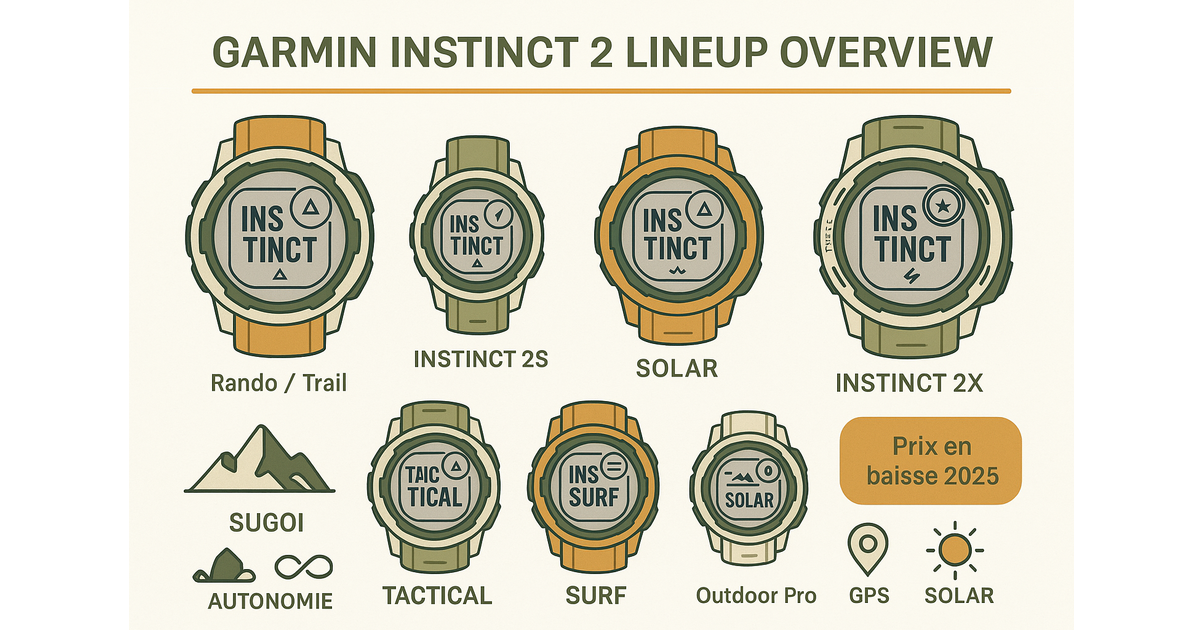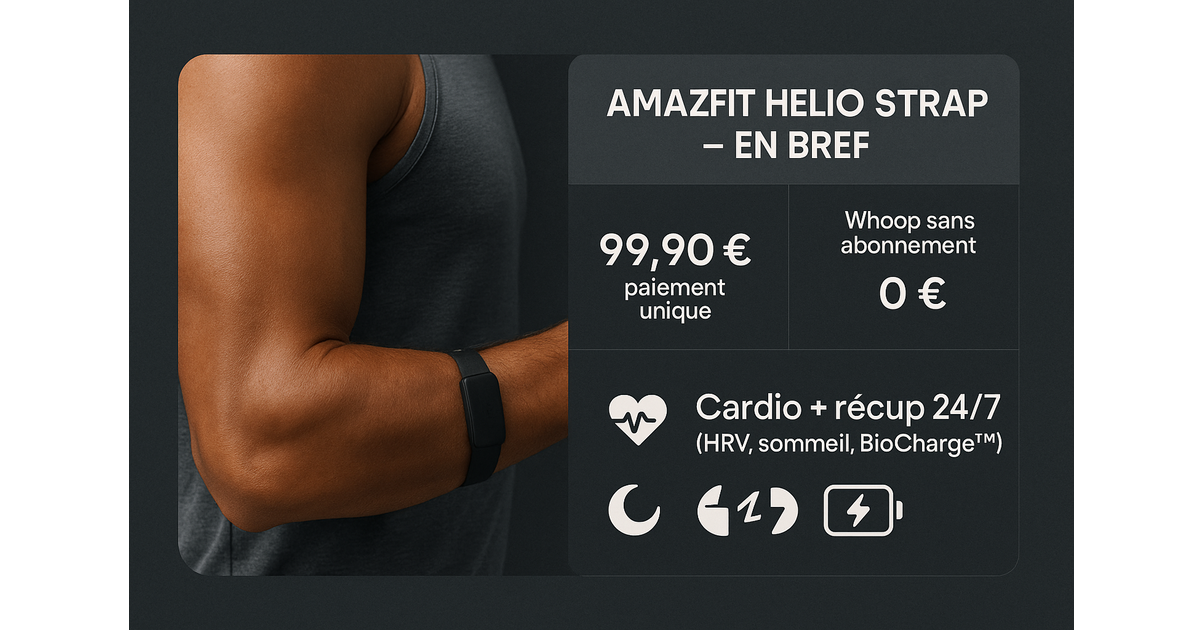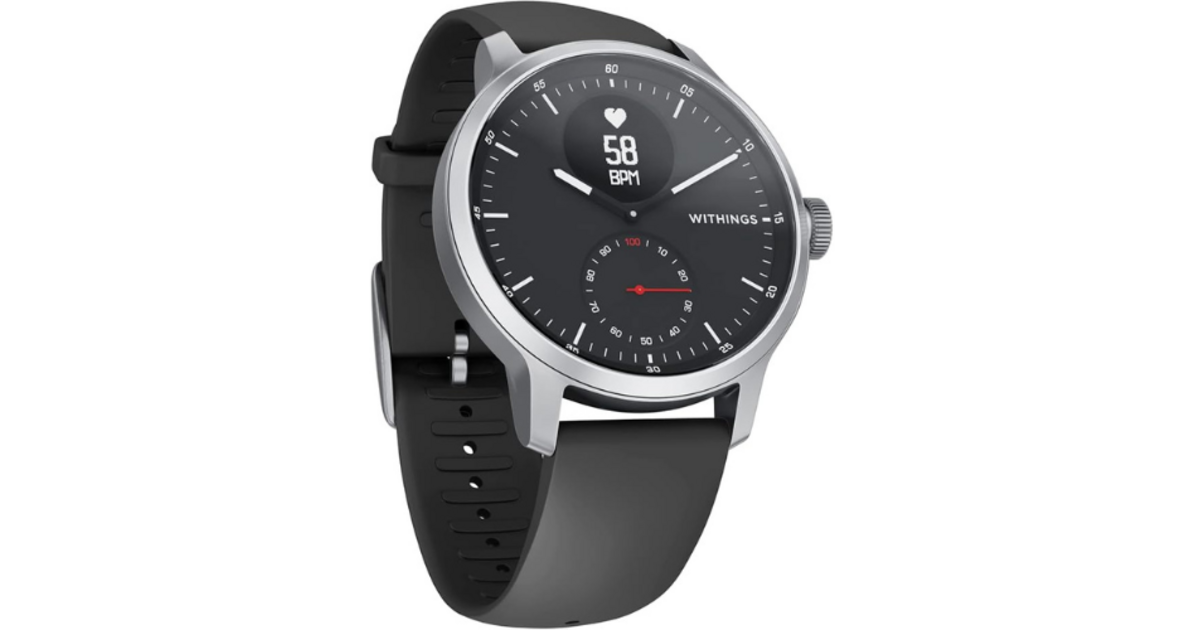Table of Contents
Software functions, health and training: what changes every day
This is where many underestimate the Instinct 2. We see it as a “connected G-Shock”. In reality, on the software side, it draws heavily from the Forerunner / Fenix ecosystem. And this is where many were wrong.
Daily health: Body Battery, stress, breathing
The function Body Batteryyou see it everywhere in the captures, but few people explain what it changes. The watch combines your heart rate, heart rate variability (HRV), stress level and day’s activity to give you a gauge from 0 to 100.
In practice:
- After a short night and a big workout the day before, you wake up at 35–40/100. You know that today will not be the day to do a split.
- On well-managed “off” days (good sleep, little stress), you go back to 80–90. This is where you can push a little.
This is not an absolute truth, but it is a guideline. It keeps you from being stubborn when your nervous system is already exhausted.
Sleep, Pulse Ox and Recovery Score
The Instinct 2 follows your sleep in phases (light, deep, paradoxical) and gives you a Sleep Score every morning. You can activate the Pulse Ox (blood oxygenation) at night, useful if you want to monitor trends at altitude or suspect apnea.
What matters most:
- You immediately see if the duration and quality of your sleep correspond to your level of tiredness.
- You can correlate bad nights with “bad” days in training. It quickly calms the desire to binge Netflix until 2 a.m.
Monitoring of stress completes the picture: basically, the lower your HRV, the higher your estimated stress. You can see very clear peaks after a tense day at work, a hellish car ride… or one coffee too many, let’s be honest.
Sport Profiles and Advanced Training Metrics
On the Instinct 2, you don’t just have “Run” / “Bicycle” / “Hiking”. You have a real collection of profiles: trail, track, walking, mountain biking, skiing, weight training, cardio, tactical activities, etc. You can deactivate them, reorganize them, in short, adapt the watch to your practice.
Where it becomes interesting for the athlete who trains seriously:
- Training status : the watch crosses acute load / chronic load to tell you if you are maintaining, progressing, overloading or undertraining.
- Training load : each session is assigned a load based on duration and intensity (via HR). You see if you stay in a productive range.
- Recovery time : after a big block, the watch tells you an estimated time before being at 100% again. Not an exact science, but a useful safeguard.
- Training Effect (aerobic / anaerobic): you see if your session has mainly improved your basic endurance or your ability to withstand high intensities.
So, even without an ultra-structured training plan, you keep an eye on the overall balance. You see when you accumulate too many hard sessions in a row. You see when you stagnate. Anyway, you get the idea.
Connectivity, notifications and Garmin Pay
On the “smart” side, the Instinct 2 remains deliberately sober, but it ticks the important boxes:
- Notifications filterable: SMS, calls, messaging. You can reduce it to what is strictly useful (and you should).
- Music control on the smartphone (no native storage, but it is consistent with the philosophy of the watch).
- Garmin Pay : contactless payment directly on the wrist, if your bank is compatible.
Garmin Pay, concretely: you register your card in Garmin Connect, you define a security code, and you activate the payment on the watch when you go to checkout. It really helps when you’re on a long outing and you just want to grab a drink at a gas station without lugging around your wallet.
For very specialized sports (fencing, precision indoor sports), certain watches more “sports smartwatch” oriented may be more comfortable on a daily basis. I delved into the subject in a connected watch comparison ideal for today’s modern fencing.





